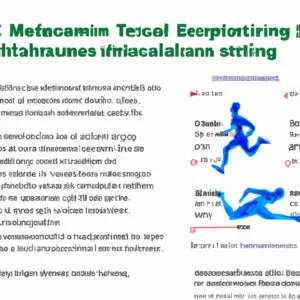Break Down the Science of Fasting Benefits
The Science Behind Intermittent Fasting: How 16:8 and 5:2 Affect Your Metabolism and Hormones
Intermittent fasting (IF) has gained popularity for health improvement, weight management, and metabolic enhancement. The 16:8 and 5:2 methods stand out for their simplicity and effectiveness. These methods significantly impact metabolism and hormones. Let’s explore their physiological effects.
Understanding Intermittent Fasting
Intermittent fasting emphasizes when to eat rather than what to eat. It alternates between eating and fasting periods, promoting various health benefits.
The 16:8 Method
The 16:8 method involves fasting for 16 hours and eating during an 8-hour window. Many people find it manageable, such as eating between noon and 8 PM. During fasting, consume only non-caloric beverages like water, tea, or black coffee.
Research shows that the 16:8 method enhances metabolic flexibility. The body can efficiently switch between burning carbohydrates and fats for energy. Fasting depletes glycogen stores, prompting the body to use fat as a primary energy source, leading to fat loss.
The 5:2 Method
The 5:2 method offers a different approach to intermittent fasting. You eat a normal diet for five days and restrict caloric intake to 500-600 calories on two non-consecutive days. This flexibility helps some individuals adhere to the fasting protocol.
Studies indicate that the 5:2 method can result in significant weight loss and improved metabolic health. Reducing calorie intake on specific days lowers insulin levels and enhances insulin sensitivity, reducing type 2 diabetes risk.
How Intermittent Fasting Affects Your Metabolism
Intermittent fasting profoundly impacts metabolism. Fasting triggers hormonal changes that facilitate fat burning and energy utilization.
Hormonal Changes During Fasting
Fasting primarily lowers insulin levels, which promotes fat storage for energy use. Lower insulin levels enhance fat burning, making fasting effective for weight loss.
Fasting also increases norepinephrine (noradrenaline), which plays a critical role in fat metabolism. Higher norepinephrine levels can boost metabolic rate, encouraging the body to burn more calories at rest.
Conclusion
Intermittent fasting methods like 16:8 and 5:2 offer effective strategies for improving metabolism and hormonal balance.
Below are related products based on this post:
FAQ
What are the main differences between the 16:8 and 5:2 intermittent fasting methods?
The 16:8 method involves fasting for 16 hours and eating during an 8-hour window, while the 5:2 method allows individuals to eat normally for five days but restricts caloric intake to 500-600 calories on two non-consecutive days. Both methods provide flexibility in adherence and can lead to significant health benefits.
How does intermittent fasting affect metabolism?
Intermittent fasting positively impacts metabolism by triggering hormonal changes that facilitate fat burning and energy utilization. Fasting lowers insulin levels, which promotes fat storage for energy use, and increases norepinephrine levels, which can boost metabolic rate and enhance calorie burning at rest.
Can intermittent fasting help with weight loss?
Yes, intermittent fasting can aid in weight loss. Both the 16:8 and 5:2 methods have been shown to result in significant weight loss by enhancing metabolic flexibility, reducing calorie intake, and improving insulin sensitivity, which collectively contribute to fat loss.















Post Comment